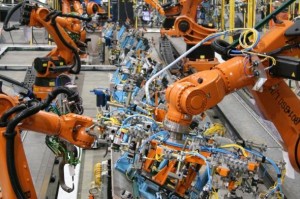 The manufacturing industry can be slow to take on new technology, but new technology can drive higher customer engagement and growth opportunities…
The manufacturing industry can be slow to take on new technology, but new technology can drive higher customer engagement and growth opportunities…
The manufacturing industry has been expanding for the past eight months, according to the Australian Industry Group Performance of Manufacturing Index. This is due, in part, to the weaker Australian dollar. But the sector remains vulnerable to international market conditions, continuing competition from cheaper overseas manufacturers, and the possibility of the dollar strengthening according to a statement by UXC Eclipse, a CSC company.
Carsten Pedersen, senior executive of Microsoft Dynamics NAV at UXC Eclipse, said, “It’s critical for manufacturing companies to take steps now to protect their businesses against these external forces.
“While manufacturing used to be insulated from the consumer market to some extent, the faster pace of business and increasing consumer expectations are affecting manufacturers directly. Companies need to reduce the time it takes to get products to market, without increasing costs. Consumers expect a fast turnaround but they aren’t willing to pay a premium.”
The entire supply chain ecosystem must therefore transform to meet these demands, the company said. To remain economically viable, retailers need to sell more products faster, and at competitive prices. This puts pressure on distributors to shorten delivery times and, in turn, on manufacturers to accelerate production cycles.
To remain economically viable, retailers need to sell more products faster, and at competitive prices.
Carsten Pedersen said, “This has been difficult in an industry that has traditionally been slow to embrace change. This is understandable given significant changes mean manufacturers needed to re-tool and re-skill. The costs and time required to do this effectively means many manufacturers are reluctant to commit to new techniques and technology too soon. Yet paradoxically, manufacturing is often the bellwether for new processes, since it’s an industry in which waste and errors carry a high cost.”
Now, there is a range of new technology helping manufacturers drive higher customer engagement and growth opportunities. Early adopters have been able to increase efficiencies and reduce costs through embracing the new customer-first culture.
Known as the SMAC Stack, these new technologies include social, mobile, analytics, and cloud. It is an essential toolkit for manufacturers looking to grow even as the manufacturing industry as a whole struggles, the company said “In addition to new technologies, manufacturers should reconsider their use of established systems to maximise the benefits. Enterprise resource planning (ERP) systems are essential for manufacturers,” said Pedersen.
“ERP provides visibility, traceability, quality management, and planning capabilities that let manufacturers minimise costs. Manufacturers looking to optimise capacity, respond to market demand, and many supply chain dynamics tend to benefit from ERP solutions.
“While there is no one-size-fits-all solution, Australian manufacturers can compete with overseas competitors by embracing the right mix of solutions and undergoing a cultural shift towards a customer-first approach.”



